The story of Hannibal Lecter contains all of life’s emotions, but they are experienced to such extremes that they are unfathomable to average beings like ourselves. His narrative begins as that of a young child in a war-torn country, born to rich parents.
Despite the fact that the war ended in 1945, Lecter’s nightmares continue to torment him. He lost both of his parents to the war when he was a child, but that wasn’t the hardest part! He and his newborn sister Mischa are discovered by a bunch of robbing and raiding troops.
They not only cook and eat her, but also force-feed him in a heinous trick. This heinous act of cannibalism has a negative impact on his psyche. Years later, he matures into a gentleman with a dark bloodthirsty streak.
Mischa’s terrible death was finally put to rest when Hannibal Lecter exact his vengeance. However, that nail leaves an indelible mark on his psyche, a hole that will never be filled.
In this video, we’ll delve into Hannibal Lecter’s psychology and behaviours to see how Thomas Harris intended for readers to see his fictional serial murderer and cannibal in the books Red Dragon, Silence of the Lambs, and Hannibal. In addition, we’ll create a character profile based on Lecter’s film adaptations of the books.
If I Tell You, I’m Afraid You Won’t Even Try It
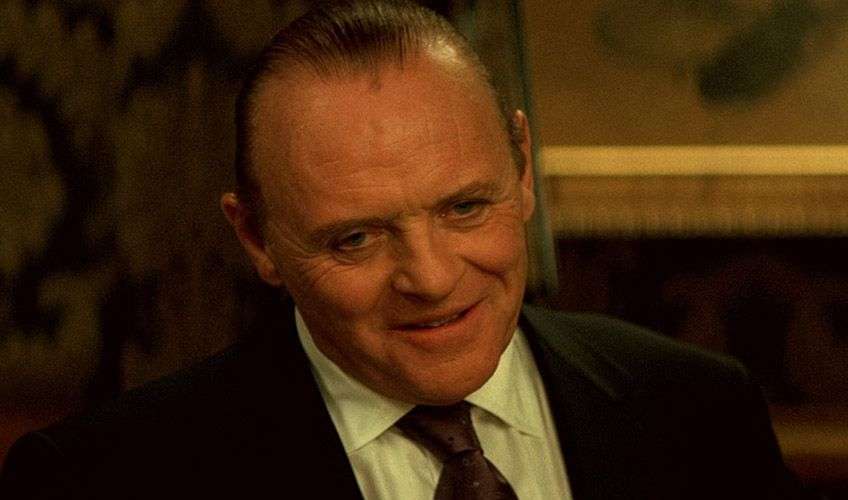
The famous Hannibal Lecter was born on January 20, 1933, in Fortress Lecter, a historic castle deep within the Lithuanian city of Vilnius. Count Lecter, Hannibal’s father, was a rich aristocrat and a direct descendant of the notorious warlord Hannibal – the Grim.
In the early 15th century, he was noted for his cruelty. Hannibal Lecter’s author, Thomas Harris, employs highly suitable terminology. Hannibal’s true name is Hannibal Barca, a Carthaginian general and politician who is regarded as one of history’s most talented military leaders.
This great commander, however, was not as noble as one might believe, and his persona was eerily similar to Hannibal Lecter’s. Hannibal Barca won more battles with his intellect than with his men’s lives. He employed espionage, strategy, and stealth, combining these with the element of surprise, to defeat his foes, regardless of their power or numbers.
Similarly, Hannibal the Cannibal is crafty, brilliant, and enjoys catching his opponents off guard, frequently adopting aggressive tactics and techniques to defeat others. For example, in the film “Silence of the Lambs,” he disguises himself as the officer he just killed in order to flee prison.
He also peeled an officer’s face and layered it on top of his own to fool the doctors into thinking they were transporting an injured cop to the hospital rather than Hannibal. Apart from this, Lecter and Barca share the trait of cannibalism.
According to historians, the Punic Wars that Hannibal Barca fought was one of the most brutal and harsh in nature, and the retreating soldiers had no option but to indulge in cannibalism.
General Hannibal was subjected to immense mental trauma by the Romans when they sent him his younger brother’s severed head in the hopes of demoralizing him. However, this backfired, and enveloped in his fury he laid waste to his enemy. Similarly, Hannibal became the embodiment of monstrosity only after his sister was killed and eaten.
His flashbacks and repressed memories tortured him to the extent that he suffered a psychotic breakdown, reliving the grim cannibalistic tragedy, but with a desire to avenge the gruesome death of his baby sister. By doing so, he feels in power and manages to eclipse his horrendously morose past.
Killing Must Feel Good To God, Too. He Does It All The Time
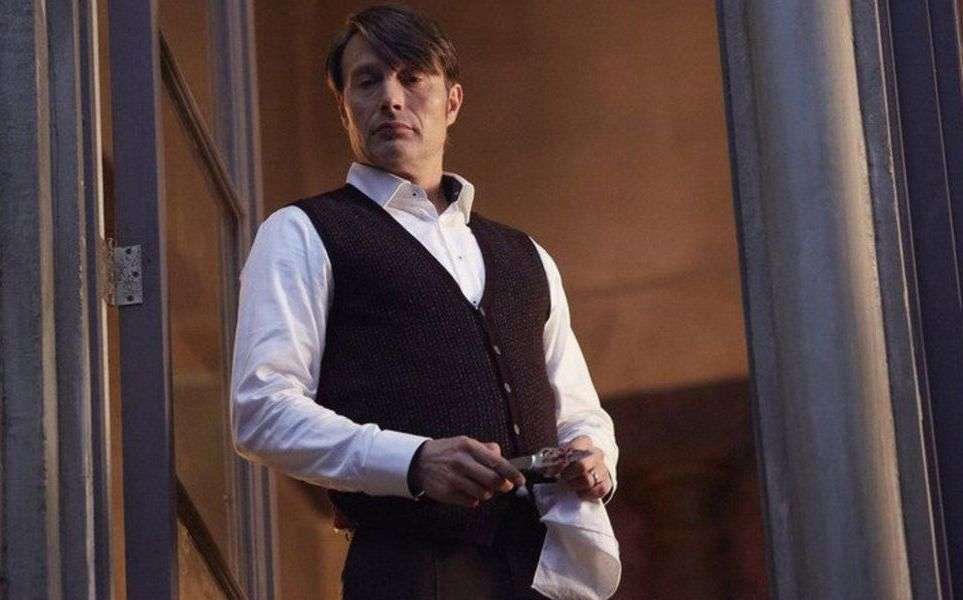
Hannibal was a man of etiquette and taste, well-read in art and culture, and fluent in numerous languages, as we know from the movies and television programme. This was due to the fact that Lecter was born into an affluent and aristocratic family.
His early years were naturally filled with study and learning. He began learning Lithuanian, German, and English at the age of six, and he went on to acquire French and Japanese a few years later.
Hannibal brings his infant sister, Mischa, to Castle Lecter later that year. Hannibal and Mischa build an exceptionally loving and protective connection over the next few days. He would play guide around the entire castle once she was old enough to walk and roam.
This endearing brother-sister connection, however, hit a snag in 1941, when Hannibal was only approximately eight years old. In June of that year, Castle Lecter was hit by the full fury of WWII as Nazi soldiers stormed Vilnius as part of Operation Barbarossa.
Fearing death and plunder, Count Lecter took his family and a few others to their lodge, located deep inside the woods. They spent three winters in the lodge, feeding on the wild. We move forward to 1944; Hannibal must have been around 11 and Mischa 5.
One day, a Soviet tank comes by the lodge, and the soldiers demand water. While the adults stood outside with the soldiers, Hannibal had Mischa under his protection inside the lodge.
Terrified by the fact that the war had come to his doorstep, he held Mischa closer, not knowing that the Russian soldiers were far from the worst. To Hannibal’s horror, Nazi planes opened fire and bombarded the Russians and his family. The little boy watched helplessly, as his parents were shot over and over again, with Mischa by his side.
Many soldiers turned to robbing and pillaging as the conflict drew to a close, but these looters were being pursued. One of these groups was led by Nazi collaborator Vladis Grutas.
Grutas and his soldiers rushed Hannibal and Mischa’s lodging after they ran out of places to hide. They chose to remain there until everything calmed down, but the issue of food loomed big. They resorted to cannibalism, targeting Mischa, because they had run out of food and had no animals to kill.
They make Hannibal eat his own sister as punishment. After dining on Mischa, the invaders flee for their life as the lodge is shelled by Soviet soldiers. A chained Hannibal, leaves the lodge to find help, and is found by a group of Soviet soldiers, who transport him back to Castle Lecter, which had been converted into a home for the orphans of war.
The heavy toll on young Hannibal turned him mute for quite a number of years. The savage murder and cannibalism were etched into his memory and eventually invaded his personality.
Yet, Hannibal had managed to suppress most of his memories from this episode for at least a decade. But Mischa’s screams would continue to haunt him in his nightmares. Hannibal’s muteness made him a seemingly easy target for the bullies, but Hannibal would exact his revenge on anyone who misbehaved with him or the others.
In one of the scenes from ‘Hannibal Rising’, he plants a bear trap for a boy who had previously attempted to assault him. According to the books, Hannibal was kind to the younger orphans.
Whenever Feasible, One Should Always Try To Eat The Rude
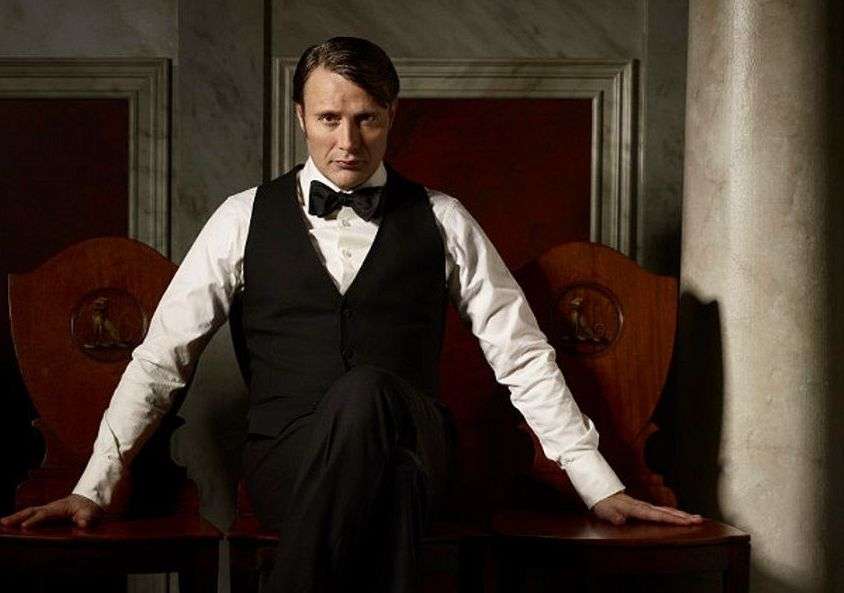
Hannibal’s uncle, Count Robert Lecter, took him in when he was 13 years old, according to Thomas Harris’ writings. Robert shared a home with his wife, Lady Murasaki, and they both treated him as if he were their own child.
According to Hannibal Rising, he left the orphanage at the age of 18 and moved to France to live with Lady Murasaki, whose husband, Hannibal’s uncle, had recently died. Nonetheless, the tale that follows is nearly identical in both sources. Lady Murasaki becomes a close friend of Hannibal’s and he finally falls in love with her.
While learning about Japanese culture and martial arts from Lady Murasaki, Hannibal acquired a strong interest in painting. Lady Murasaki had become a favourite of Hannibal’s. Despite being dumb, he was in a better mental condition as he immersed himself in finer things like art, literature, culinary talents, martial arts, and so on.
However, Hannibal’s life had other ideas. He’d begun to have strong feelings for Lady Murasaki, who was both beautiful and lovely. Hannibal gets into a battle with a butcher named Paul Momund when he makes a filthy remark about Murasaki.
Hannibal resolves to take matters into his own hands when he discovers that his aunt is not pursuing vengeance for his sake. Hannibal entices Paul to a quiet spot and massacres him with his aunt’s sword in cold blood. He slices off the decapitated Momund’s cheeks and cooks them with mushrooms.
You may ask why the cheeks? Well, because Lady Murasaki’s chef had told him that an animal’s cheeks are the most delicious. This was Hannibal’s first murder and wilful act of cannibalism. In an act to get the lady’s attention and love, he presented to her Paul’s head, but murders don’t really go unnoticed, do they?
Inspector Pascal Popil turned the needle of suspicion towards Hannibal and pressed him to confess his crimes. He even makes him undergo a lie detector test. But Hannibal was not an ordinary man; he was shaped into a monster by years of agony and pain; he had learned to repress his emotions, fears, and memories.
Naturally, he passed the lie detector test, and with a little help from Lady Murasaki, escaped the clutches of Popil. After a few days, Lady Murasaki went to live in Paris, where Hannibal started to attend a boarding school. He eventually became the youngest in all of France to get admission in a medical school.
Memory, Agent Starling, is what I have instead of a view

Hannibal became engrossed in his study. Surprisingly, his work scholarship required him to prepare bodies for anatomy class. He learns about the precise features of human organs here, which he will combine with his culinary abilities to produce delicious dishes using human flesh later.
He eventually discovered that his sister’s killers were still alive and well. Hannibal’s hunger for vengeance had reached a fever pitch, and he’d sacrifice everything to satisfy it. His scholarship gave him access to the drug Thiopental sodium, which he used on himself to recall the circumstances of Mischa’s death.
Hannibal returned to the lodge in 1951 and began rummaging around the ruins of the crumbling structure. Mischa’s remains were finally discovered, including a few bones, a teddy, and the bathtub in which the monsters had cooked her. He also got his hands on the dog tags of those bloodied troops.
However, one of the troops, Enrikas Dortlich, who was now working as an officer at the border checkpoint, was following Hannibal. Hannibal was able to overcome Dortlich and kill him, after which he ate his cheek with some roasted mushrooms once more. He returned to Paris after giving Mischa a decent burial, where Inspector Popil was ready to deliver him a warning against committing murders in the city.
However, the news of Dortlich’s murder alerts the rest of the group. Grutas asks Milko to find Lecter and do whatever is necessary. But poor Milko suffered a terrible fate at the hands of Lecter, who drowned his probable killer in formaldehyde solution. In the scene, Hannibal tricked Milko into believing that he was sitting at a table using an amputated arm from a corpse.
This was just the tip of the iceberg that was Hannibal’s ingenious wits. Hannibal attacks Grutas at his home, but he is saved by his guard. Hannibal then escapes from there and returns home only to find that Grutas had abducted Lady Murasaki. Eventually, Hannibal unhesistantly began going after his sister’s tormentors.
One body at a time, two cheeks at a time, he slayed. After he saves Lady Murasaki from Grutas, she could no longer look into the eyes of the monster that he had become, and she left him too. In the book, Hannibal was arrested, but there was no substantial evidence to hold him guilty.
Moreover, the victims in question were all war criminals and slave traders, which made Hannibal a hero in France, and he was soon released. The film ends with Hannibal going to Montreal, Canada, to kill the last of Mischa’s tormentors. After this, he leaves France and settles in Baltimore for his internship at the Johns Hopkins Medical Center.
You see, the brain itself feels no pain
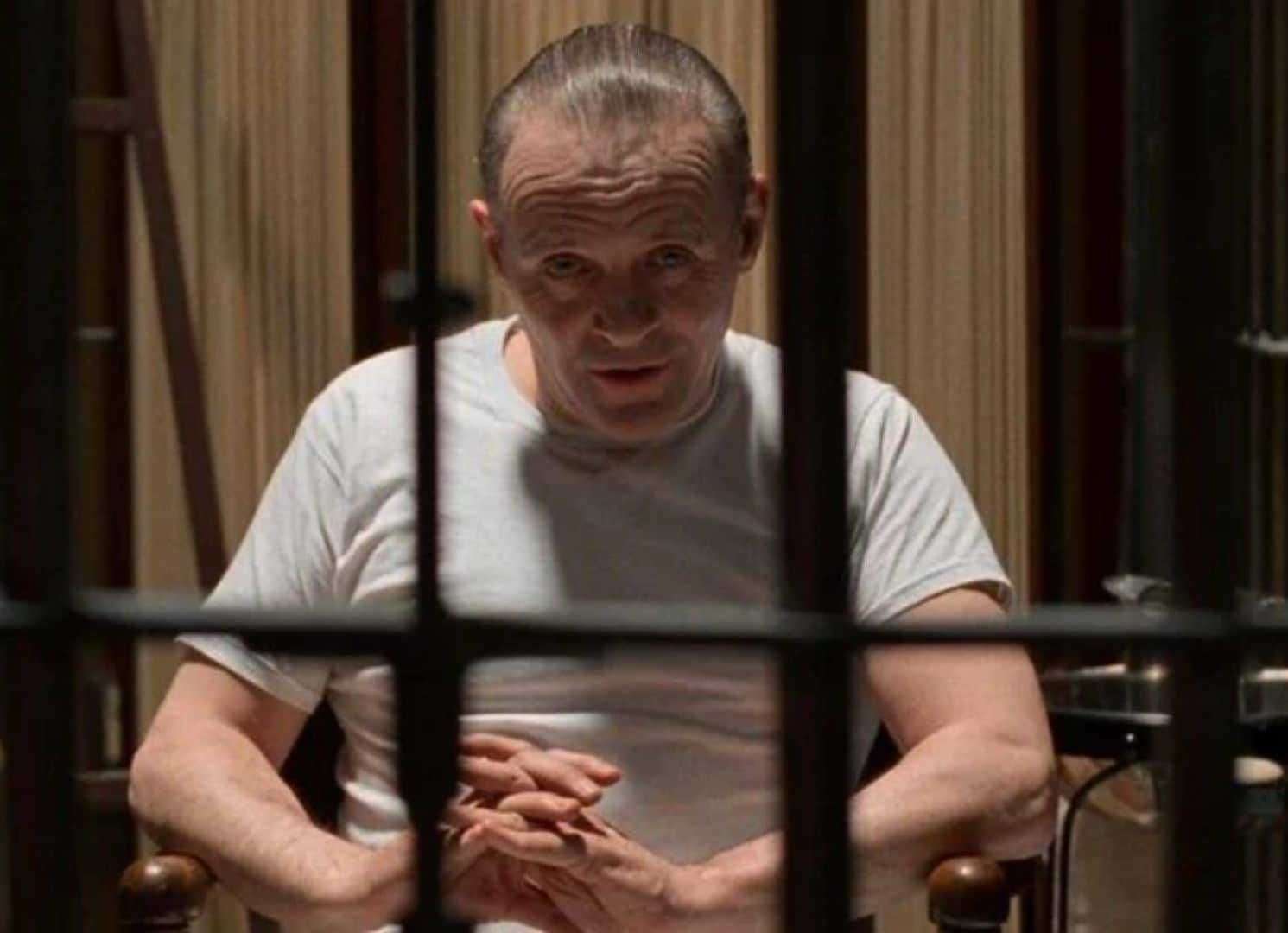
Hannibal was able to acquire an internship at Baltimore’s Johns Hopkins Medical Center because of his uncle’s instilled passion for art and painting. Hannibal earned a psychology degree and worked as a psychiatrist in Baltimore.
He established himself as an excellent criminal psychologist there, and the FBI’s Will Graham sought his advice. Furthermore, his appreciation for the better things in life helped him establish himself as a celebrity among the upper crust.
He would throw lavish dinner parties and serve guests strange amuse bouche made of human flesh. Despite becoming one of America’s most recognised psychiatrists, Hannibal Lecter despised the topic.
In fact, he didn’t even consider psychology as a field of science as he believed that psychology was filled with Hannibal also disliked how serial killers were only categorized as But, he never cared enough to present his own theory or definition of serial killers.
As a psychiatrist, he presumed that the part of his brain that felt emotions was dead. He felt no remorse for his actions, no sense of glee or gloom. All he felt was a sense of power when he killed someone.
Hannibal Lecter is both a flesh-eating psychopath and a soul-eating psychotherapist. He employs projective identification as a defence strategy against Will Graham, as shown on Hannibal. He wants to transform Graham into a serial murderer by projecting his own characteristics onto him.
As Jack Crawford, the head of FBI’s Behavioural Science Unit, had concluded, Lecter intentionally didn’t treat a few of his violent patients so that they would go on and commit murders. He does this to control the rage that burns bright within him. In ‘Red Dragon’, he does the same with Will Graham and becomes quite vocal and explicit about this trait.
I Never Feel Guilty Eating Anything
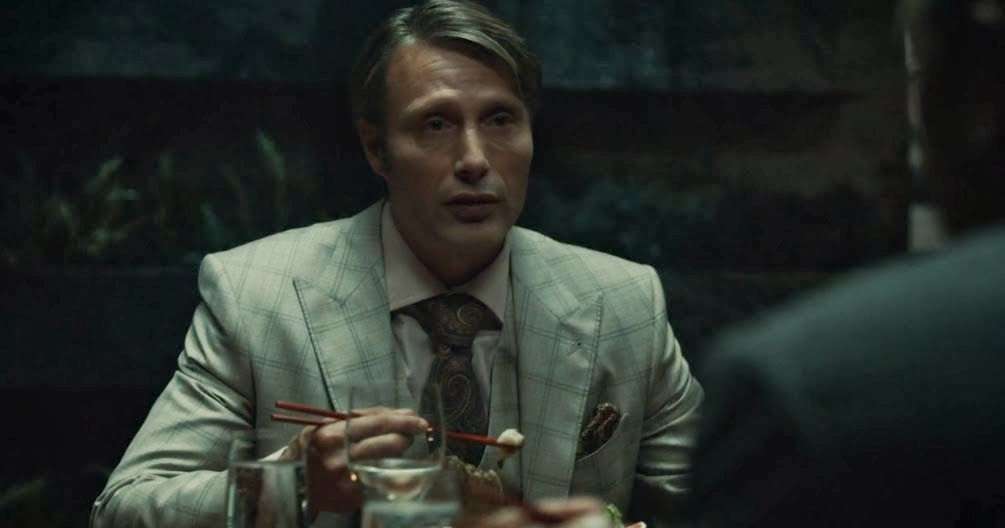
Lecter doesn’t stop when he’s through with the men who killed Mischa. Throughout the 1970s, he went on a killing spree, killing nine people and attempting to kill three more. He slaughtered them in groups of three, as if they were pigs.
He didn’t think of his victims as humans or prey; he thought of them as pigs. That was Hannibal the Cannibal’s emotionlessness and coldness. Because of the method used, the assassin was called the Chesapeake Ripper, and the murders became as well-known as the Chesapeake murders.
Mason Verger, Lecter’s lone known survivor, was the only known survivor. Mason was getting mental therapy under Hannibal’s supervision, as required by a court order. Verger was a well-known paedophile who abused his sister Margot. Verger, according to the novel, was no less intense than Hannibal, but they were two sides of the same coin.
While Hannibal was a man of perfection and fine taste, Verger was someone who conducted experiments, like starving two ferocious dogs to see if one would eat another. When Verger invites Lecter to his house, Lecter offers him a recreational form of the amyl popper, but in reality, it was a fine blend of several hallucinogenic agents.
After Verger takes the cocktail, he loses his mind and becomes extremely vulnerable to Hannibal. Hannibal derives a sense of power and pleasure looking at the state of Verger. Lecter wanted to play with Verger, psychologically as well as physically.
So, he suggested Verger skin his own face with a piece of glass and feed the chunks to his hungry dogs, and also made Verger eat his own nose. Hannibal left Verger to die, but he somehow survives. However, Verger now lived on life support with a horribly disfigured face.
Benjamin Raspail was his eighth and last victim in the Chesapeake series. Raspail, a flute with the Baltimore Philharmonic Orchestra, was his patient. Hannibal, on the other hand, was not a fan of his music. Hannibal most likely killed him because he was a thorn in the side of the orchestra’s performances.
It’s worth noting that this was just Hannibal’s viewpoint, and he was probably simply looking for an excuse to murder the flautist. Hannibal explains to FBI agent Clarice Starling that he killed the flautist due to his constant moaning and complaining during their consulting sessions. “got sick and tired of his whining.”
Raspail was slain, and Lecter took his thymus and pancreas. He is thought to have served these organs at an opulent and lavish dinner party. Hannibal cooked a magnificent supper from the remnants of a musician’s body and served it with his colleagues in the beginning of the film “Red Dragon.”
We don’t know how he killed his other victims or what he did with their bodies, but we do know that he used all of them to hone his cooking talents, based on his chats with Clarice Starling and Will Graham.
Even so, one of the officers who were investigating Lecter’s case resigned after visiting his basement; this very well implies that Lecter kept much of the remains of his victims in his basement for future consumption.
Well, what can we say? Our man doesn’t like to waste food. The FBI gives Lecter sodium amytal in hopes of learning more about his victims, but he would instead offer the FBI recipes of his dishes.
This confirms the suspicion that the victims were a part of the meal, and furthermore, it reveals that he would self administer hallucinogenic and psychotropic drugs to prepare himself for an event in which the cops would do the same with him.
What made Hannibal a more aggressive serial killer and cannibal than the rest of his squad, was the fact that he personally knew his victims and even manipulated them using their own fears and apprehensions against them.
Akin to most serial killers, Lecter honed high IQ and used his brilliance to remain hidden from the world. He didn’t just kill people for food, but because they were somewhat rude, and probably didn’t fit in his vision of a utopian social construct that Lecter had created in his mind.
I do admire your courage; I think I will eat your heart
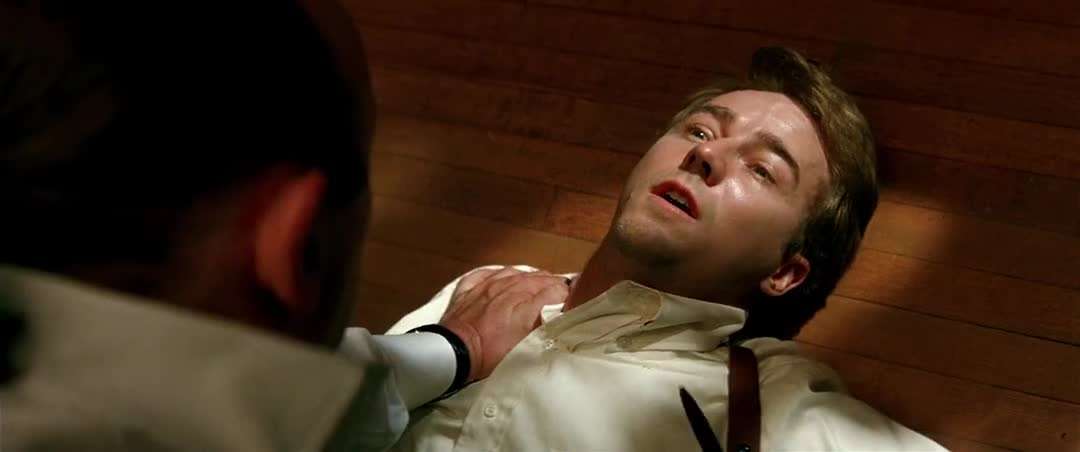
Will Graham was an FBI criminal profiler researching cannibalistic killings in the Baltimore region, and when he found that one of the victims was Lecter’s patient, he sought Lecter’s aid.
They spent days and weeks attempting to figure out who the killer was, but everything seemed to be inconclusive. Graham regarded Hannibal as one of the world’s top psychiatrists. To his amazement, Lecter was unable to discern that the murders were carried out with the intention of cannibalism.
When Graham approached him with this fresh notion, Lecter was surprised by this ‘remarkable child.’ Graham dug deeper into Lecter’s study and discovered a few ancient medical texts. Graham notices parallels between the assassinations and the pictures in these books.
He had a gut feeling that Hannibal was the assassin he was looking for. Holding the book as proof, Graham was able to tell the FBI and the local police department of the newest developments before Lecter could assault him. Before the cops come, Graham manages to injure Lecter and shoot him many times. Hannibal Lecter was spared the death penalty because the court determined that he was mentally ill.
Lecter himself was surprised at not being given the death penalty, even after the gruesome acts that he committed. Not for a moment was Lecter guilty about his crimes, but he was a reasonable man nonetheless.
For the nine counts of murder, he was given nine consecutive life sentences and sent to the Baltimore State Hospital for the Criminally Insane under the care of Fredrick Chilton. After his arrest, the FBI breathed a sigh of relief and got back to work.
They exhumed the graves of the people Lecter had killed to learn more about Hannibal Lecter, but our guy spoke clean and left no shreds of evidence or anything that would help the police build a profile for future use.
Lecter was in prison between 1975 and 1983. During this time, a new series of killings took place in Florence, and the killer was dubbed Il Mostro di Firenze. Now, Lecter couldn’t have committed these murders, but it is possible that he had inspired a copycat killer or maybe manipulated one of his patients to commit the killings.
Did you ever see blood in the moonlight, Will? It appears quite black
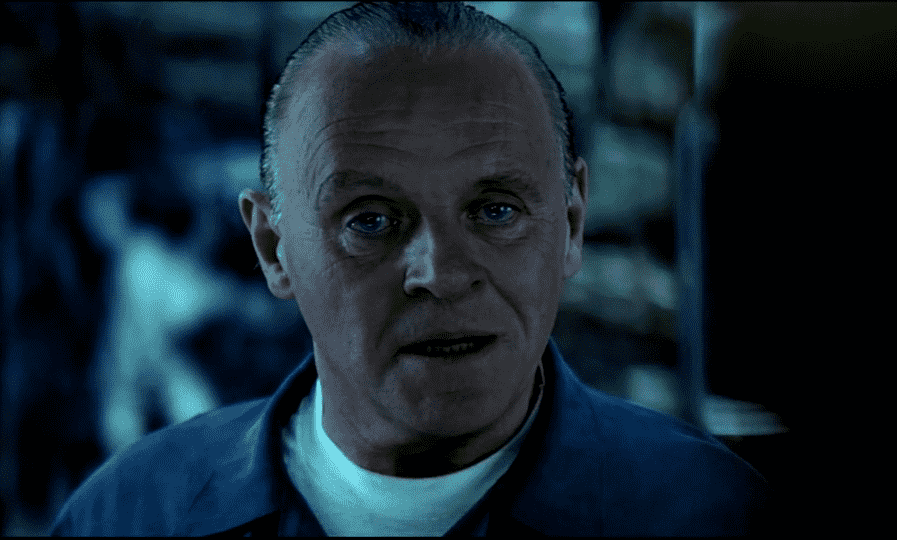
In comparison to the other inmates at the Baltimore State Hospital for the Criminally Insane, Hannibal displayed a remarkable amount of serenity and tolerance while in captivity. Except for Dr. Chilton, who intended to build a complete profile of Lecter and publish it in a book, he would spend time in his cell, never causing any problems.
Despite his dislike for his field of work, he enjoyed keeping up with the latest innovations. Besides, Lecter was familiar with psychological testing and understood what responses would get the results he needed.
As a result, he would come up with replies that would lead to the conclusion that he was a psychologically ill individual who was unconcerned about societal systems. Hannibal would often fold the questionnaire into origami to ridicule Chilton and even publish papers to make a joke of him, as Dr. Chilton reportedly informed Will Graham. Until the 8th of July, 1981, when he complained of chest symptoms and was brought for inspection, Lecter proved to be a much too intelligent patient.
When his restraints were removed for ECG, he brutally assaulted the nurse, chewed out an eye, dislocated her jaw, and swallowed her tongue. Chilton later reveals that while Lecter did all of this, he felt no rush or anxiety and his heart rate never crossed 85 beats per minute.
Hannibal also helps the FBI alongside Will Graham from the confines of his cell at the asylum, regarding the Tooth Fairy case. A serial killer was killing entire families, courtesy of his troubled past and torture at the hands of his grandmother.
The FBI met a dead end in the case, but knew that Hannibal Lecter would be able to help. So, in 1978, they brought Will Graham out of retirement as Will was the only one Lecter was willing to talk to. Will approached Lecter, but had to solve word plays and puzzles before he got what he wanted—Lecter’s help.
At first, it appeared that Lecter intended to aid Graham, but he had his own nefarious motivations. He supplied Graham some really useful information about the case while conversing with the Tooth Fairy murderer through a tabloid journal’s personal sections. Lecter had persuaded the assassin to murder Graham’s family.
I do wish we could chat for longer, but I am having an old friend for dinner
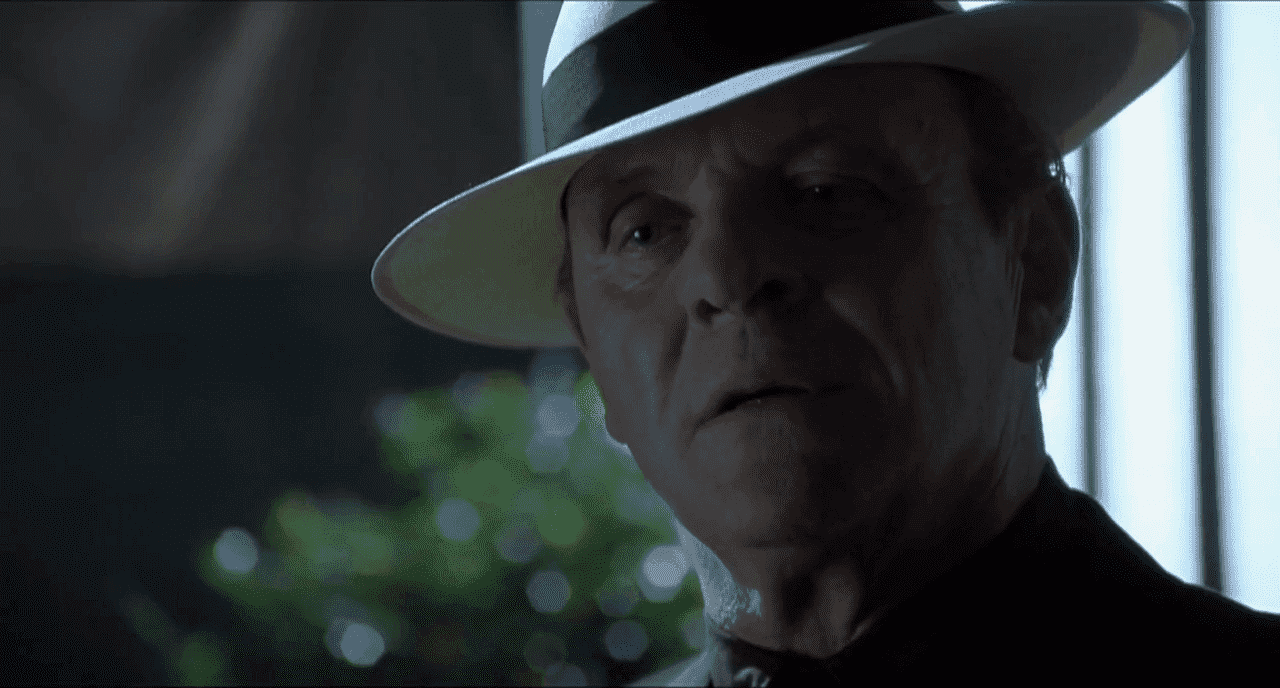
These were Hannibal’s final comments to Clarice following his escape. Jack Crawford wanted an urgent psychological profile of a new serial murderer dubbed Buffalo Bill a few years after the incidents involving the Tooth Fairy and Will Graham.
The murderer was kidnapping young ladies and placing a moth inside their necks in order to skin their bodies. Crawford sends Clarice Starling, an FBI trainee, to Hannibal, along with a psychological assessment.
Despite the fact that Hannibal dismissed the exam as a waste of time, he agreed to assist her with the Buffalo Bill case, but there was a catch. He stated he’d only help her if she agreed to play a strange game of quid pro quo with him. Only if she informed him about her private life and background would he provide information and develop a psychological profile of the killer.
Senator Ruth Martin’s daughter Catherine was Buffalo Bill’s most recent abductee. Through Chilton, Lector strikes a bargain with Ruth, promising to disclose Buffalo Bill’s true identity in person. He was whisked away to Memphis, where he was scheduled to see Ruth Martin.
The name he gave Ruth was “Billy Rubin,” according to the novel “Silence of the Lambs,” however bilirubin is a substance found in excreta. It was meant to be a giveaway to Clarice and Crawford that the name was a forgery because it was the same colour as Dr. Chilton’s hair.
However, in the film, they changed the name to Louis Friend, which was an anagram for iron sulfide or fool’s gold. After the meeting, he was taken to the Shelby County Courthouse for temporary imprisonment.
Clarice came to meet Hannibal and tell him that she knew that he had made a fool out of the others. He gave her a few more clues, but she was immediately escorted out by a few men on Chilton’s orders.
It was here that Hannibal succeeded in making his bloody and infamous escape. He had gotten hold of Chilton’s pen, which he used to open his handcuffs when the guards came to give him supplies. He brutally killed two of them, and hung one as an angel.
But escaping from this maximum-security building was not going to be an easy task, so Lecter used his ingenious mind and dexterous hands to carve out the skin of one of the policemen and placed it upon himself.
This gave them the impression that the policeman was still alive and they rushed him to a hospital in an ambulance. The ambulance was later found bereft of any living soul. The great Hannibal Lecter had escaped.
After this, Hannibal goes underground, having earned his place on the FBI’s most wanted list. However, one fine day he calls Clarice and tells her that he wouldn’t go after her, as the world was an interesting place because of people like her. While he was on the phone call with her, we see Chilton arriving at the same spot as Hannibal. Hannibal keeps the phone saying, According to the book, he sent out letters.
It is important always to try new things
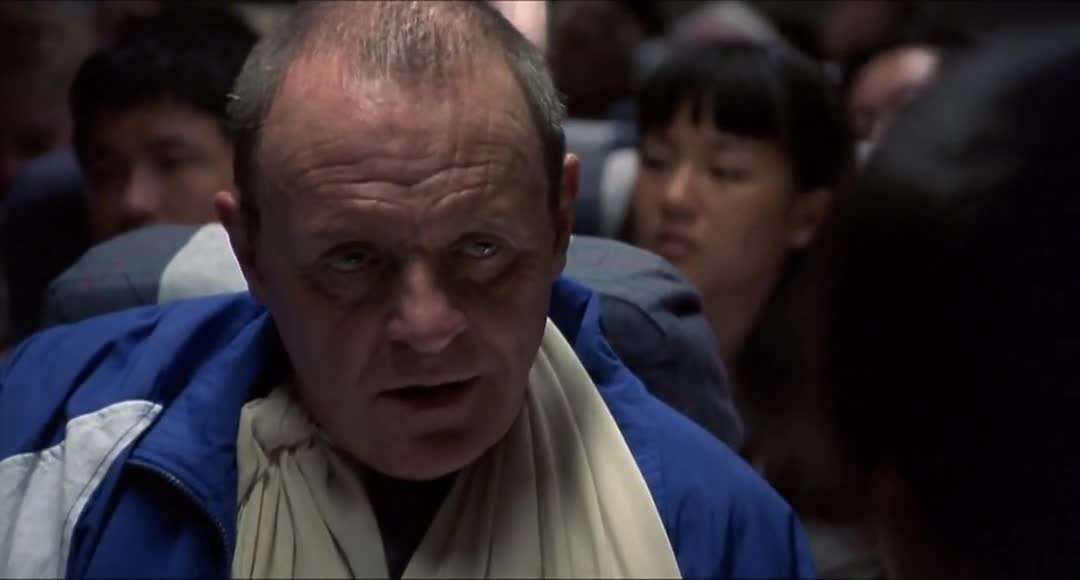
Hannibal travelled to Brazil following his escape from Memphis, according to the novel, to have plastic surgery done on his face and to have his sixth finger surgically removed. Ridley Scott, on the other hand, did not want his main character’s look modified in Hannibal, thus there was no plastic surgery.
Anthony Hopkins reprises his role as Hannibal Lecter, the famed serial killer. Lecter eventually ended up in Florence, Italy. Probably to have a window with a view, maybe of a river. In Florence, he adopts the fictitious name Dr. Fell. His charm, intelligence, and art knowledge get him a position as a museum curator.
Something doesn’t smell good when investigator Rinaldo Pazzi meets with Lecter in Florence. Pazzi was the lead detective in Florence’s Il Mostro case, but his failure had caused him shame. Pazzi eventually learns about Lecter’s true identity and makes a deal with Mason Verger, who had put a price on Lecter’s capture.
Despite knowing who Hannibal Lecter was and how he operated, Pazzi attempts to capture him and ends up becoming the prisoner himself. Lecter tortures Pazzi, who reveals to Lecter that Verger intended to feed him to boars trained to eat human flesh.
Hannibal then returns to the United States, where both Verger and Starling were desperately but separately racing against time to hunt Hannibal down. Verger’s men capture Lecter, but Starling rescues him.
According to the film, Hannibal saves Starling, who was shot with sedative darts by Verger’s men and he threw Verger into the pigpen. However, according to other sources, he convinced his sister Margot to kill Verger.
Hannibal is a film that runs at a breakneck pace for obvious cinematic reasons. While Paul was still alive and under the effect of sedatives, Hannibal brings in Starling’s despised colleague Paul Krendler and cooks a delectable feast from his brain.
Clarice managed to shackle herself to Lecter with the same pair of handcuffs, ensuring that he had his way. Hannibal Lecter sliced his own wrist to release himself. He didn’t murder Clarice, which he probably did since he saw a reflection of Mischa in her.
According to the book, when Hannibal saves Clarice from the Verger house, he kept her under isolation from others for several months and used various techniques to suppress her personality and make her believe that she was Mischa.
However, her strong will was too much for Lecter to handle, and they ended up making love. The both of them disappear after the incident, and Hannibal Lecter’s experiments with Clarice gave him a counterpart, even if not a sister.
Perhaps Hannibal’s description could be summed up well in W. H. Auden’s words, “Those to whom evil is done, Do evil in return.”
